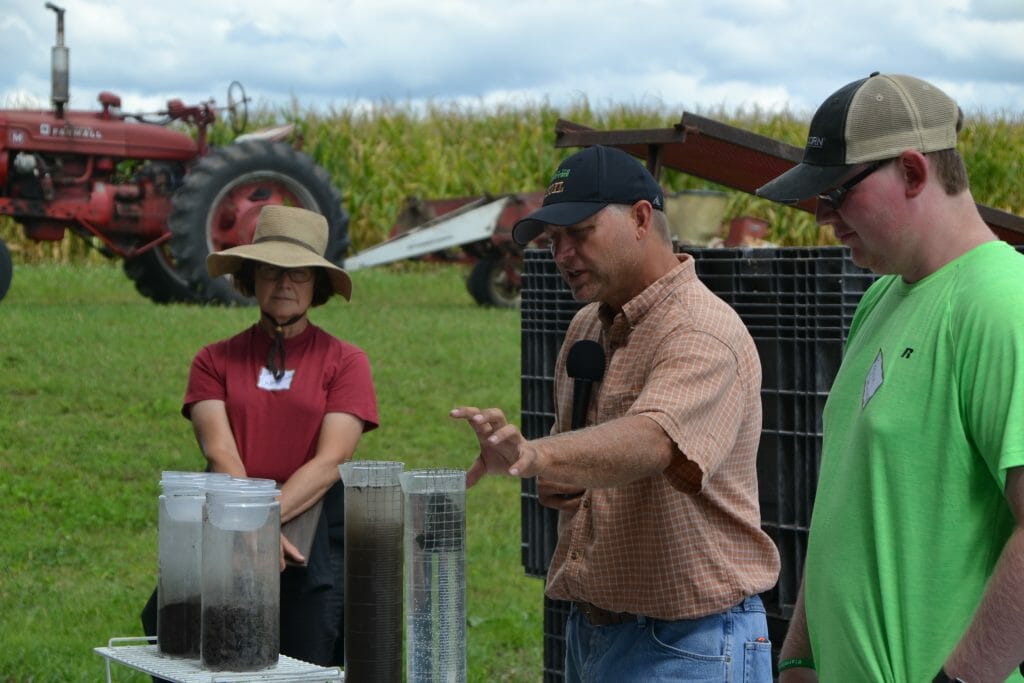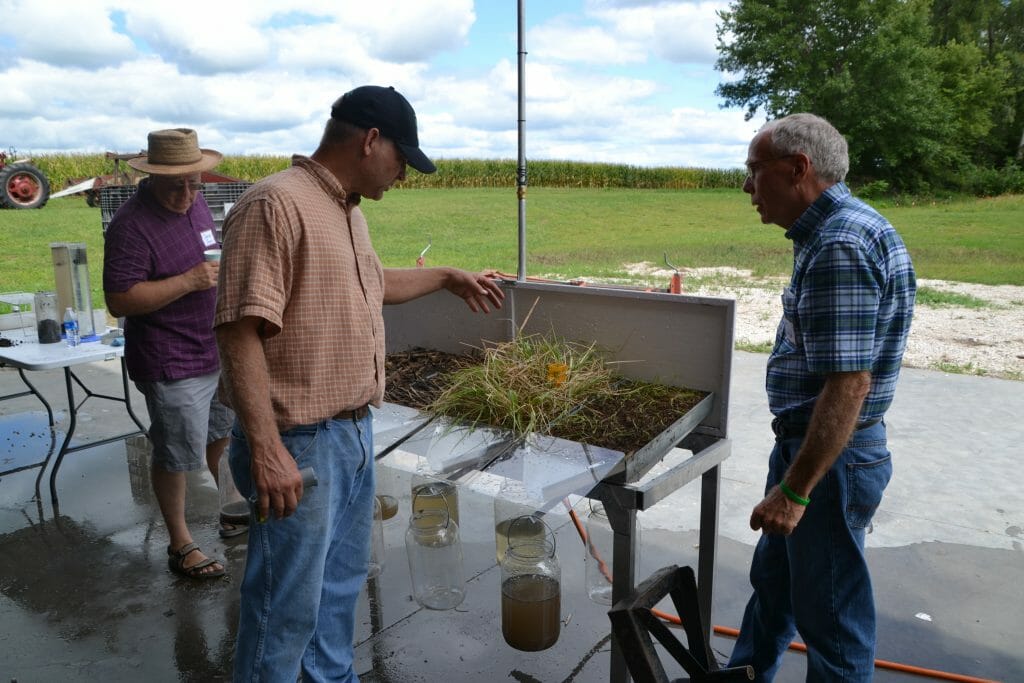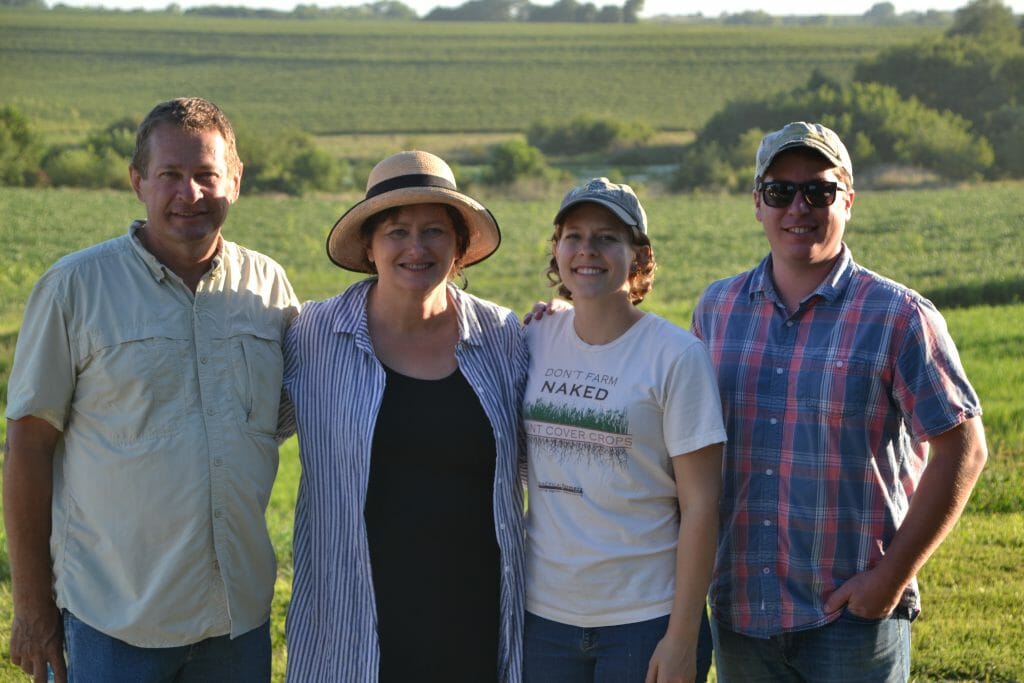Field Day Video Recap: Soil Regeneration and Cover Crops
For those who missed the field day on soil regeneration hosted by Chris & Janenne Teachout near Shenandoah on Aug. 29, or for those who want to re-acquaint themselves with some of it, check out the “highlight reel” we’ve compiled below. The video features Chris, as well as Dr. Jill Clapperton, discussing cover crop practices and benefits to soil health.
Find more images from this excellent field day below.
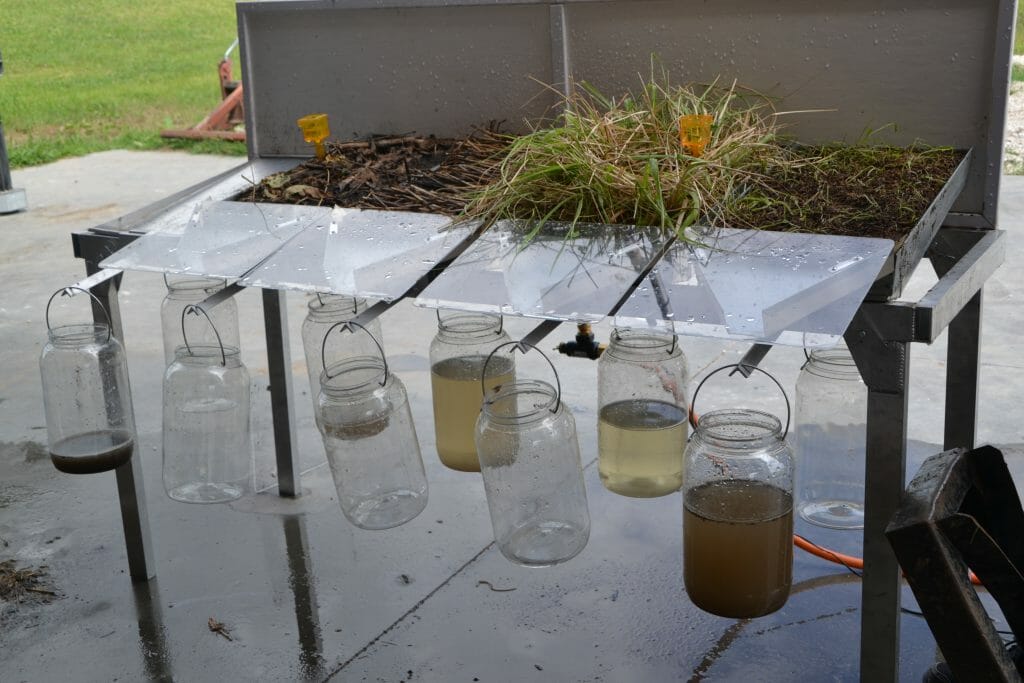
The rainfall simulator shows how precipitation runs off and infiltrates soils under different management schemes. The jars in the background show infiltration from covers with perennial pasture or cover crops. The jars in the foreground show water that has run off and carried soil from bare ground.
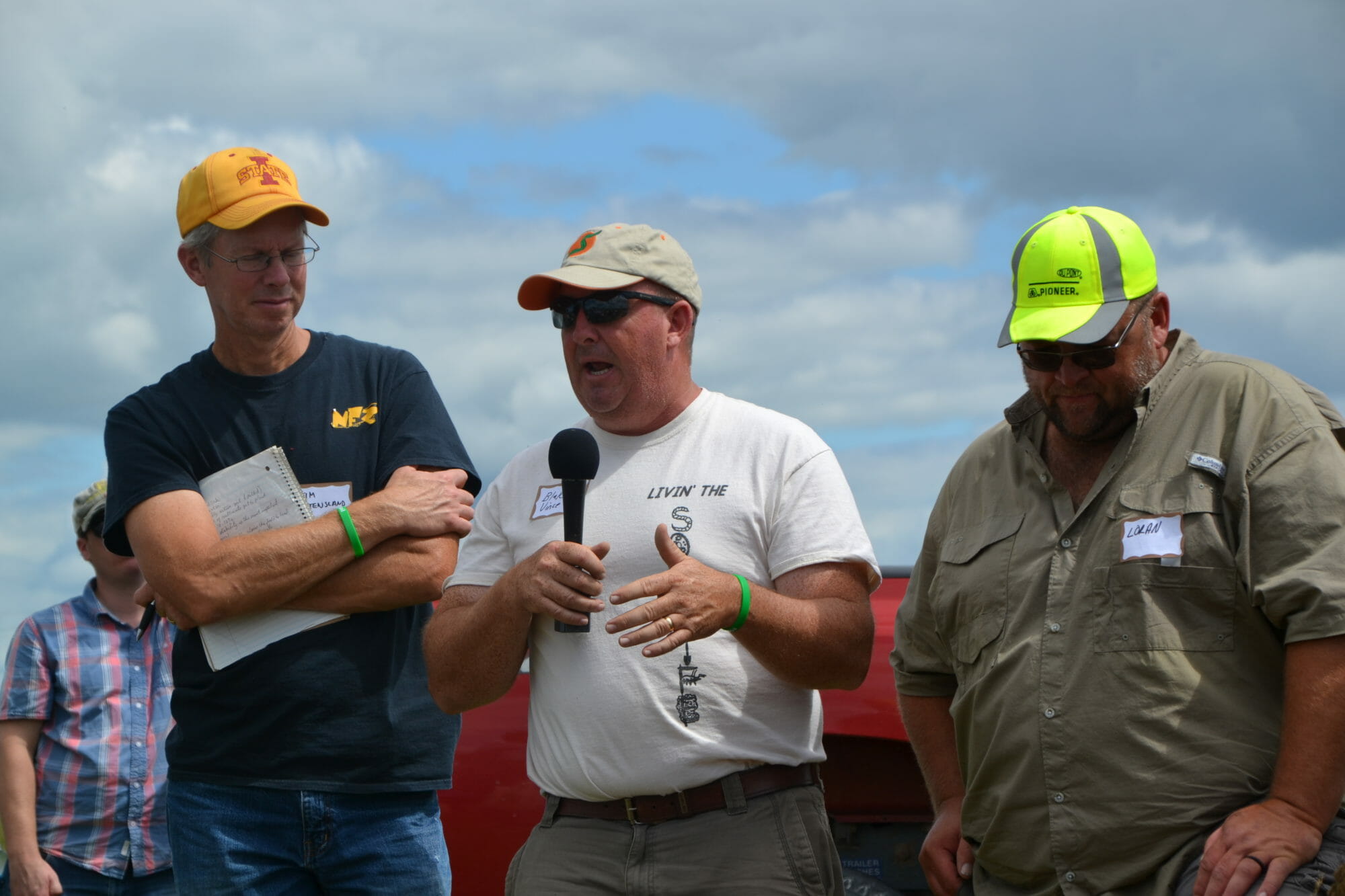
Blake Vince (center) came all the way from Merlin, Ontario! He’s credited with coining the phrase “soil your undies” as it relates to the fun way to observe your soil’s biological activity.
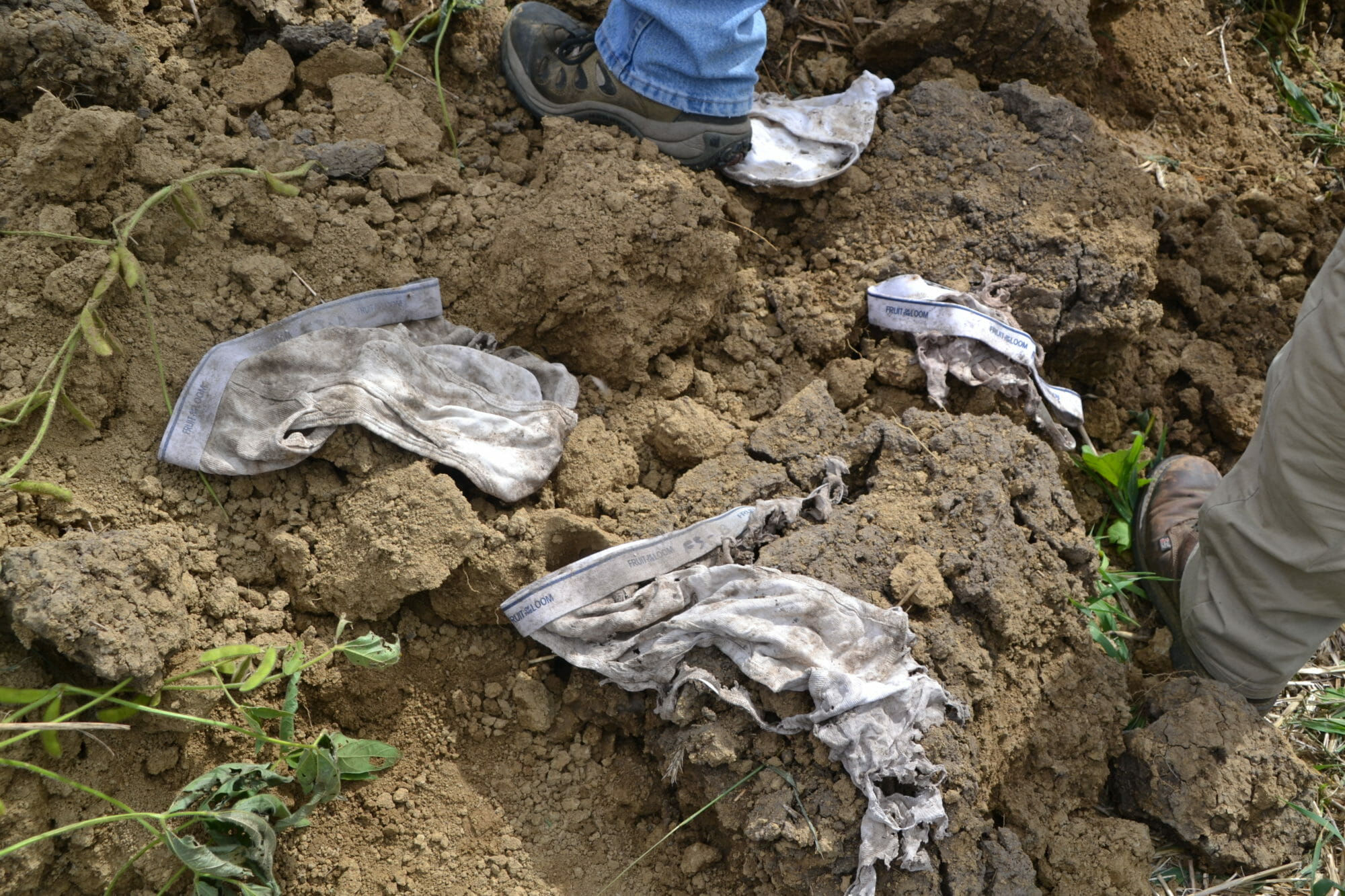
Cotton underwear that Chris buried under no-till soybeans and retrieved after 30 days. At left is underwear that came from an area of the field that didn’t have cover crops. At right, underwear which was more degraded that came from an area with cover crops.
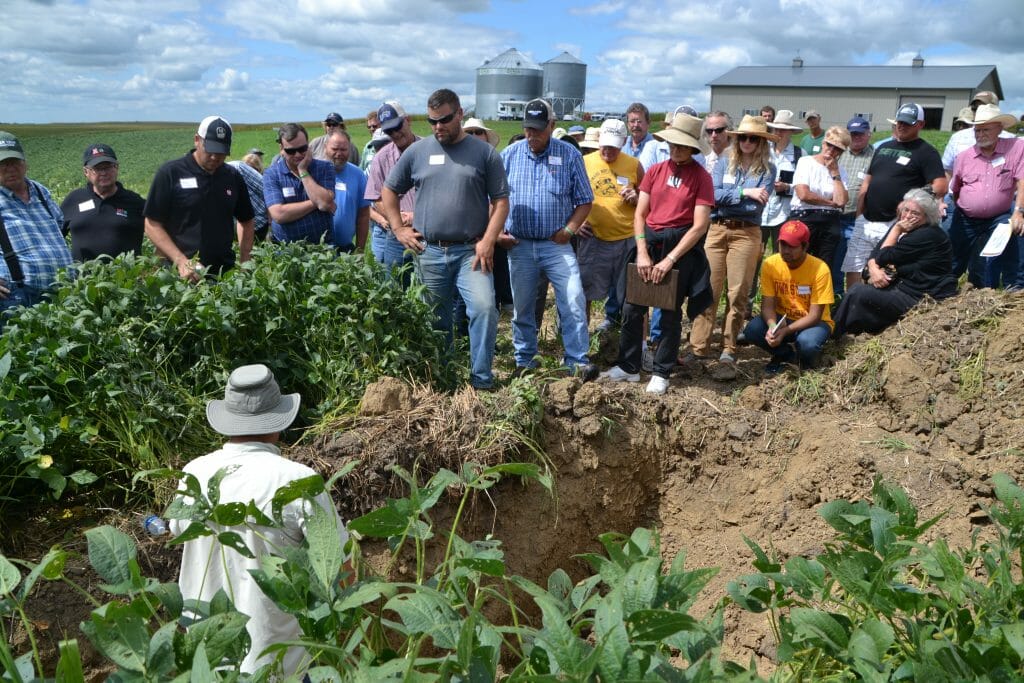
Chris dug a soil pit to get a look below no-till soybeans planted “green” into a living cereal rye cover crop.
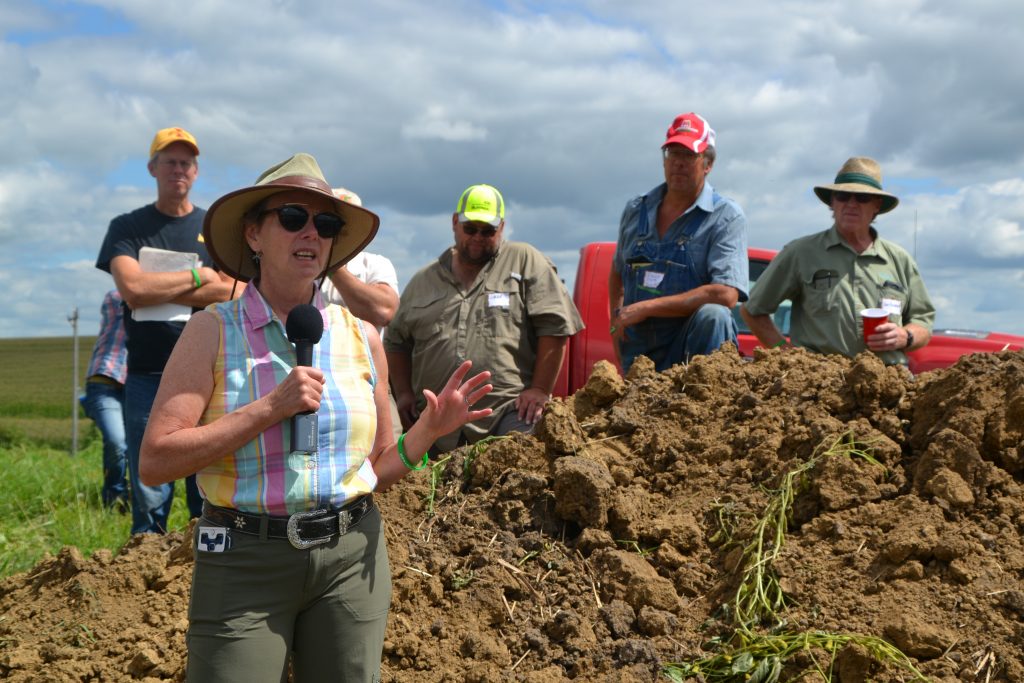
Dr. Jill Clapperton explained how crop diversity and cover crops can improve soil aggregate stability and soil structure. Soil aggregate stability is one of the best indicators of soil health, Jill told the audience..
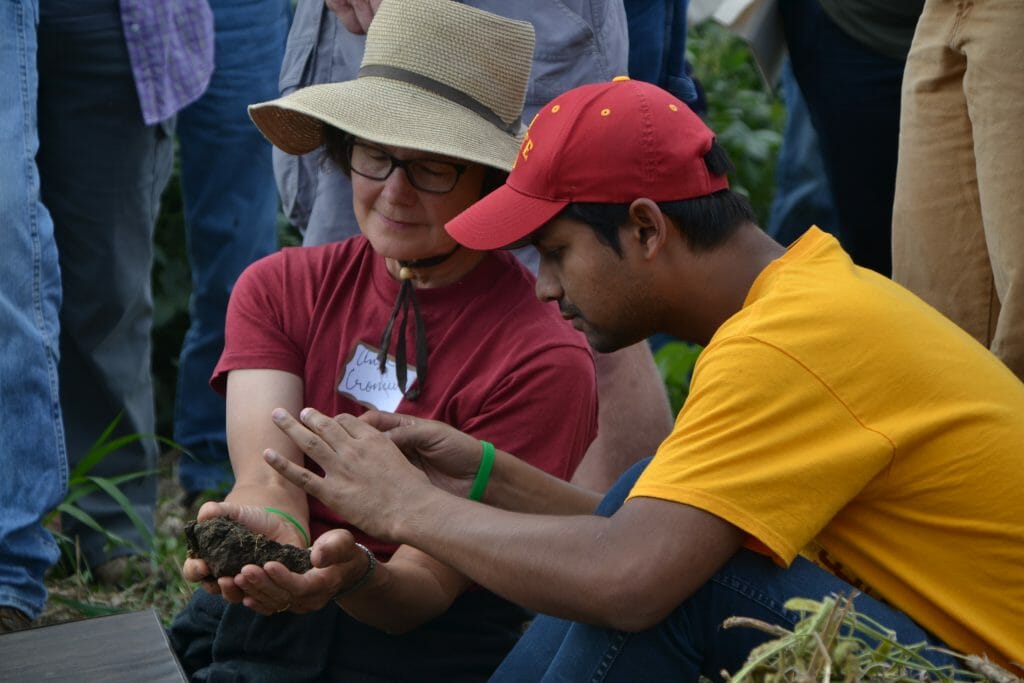
Former PFI board member Ann Cromwell and Mriganka De, postdoc at ISU take a closer look at the Teachout’s soil.
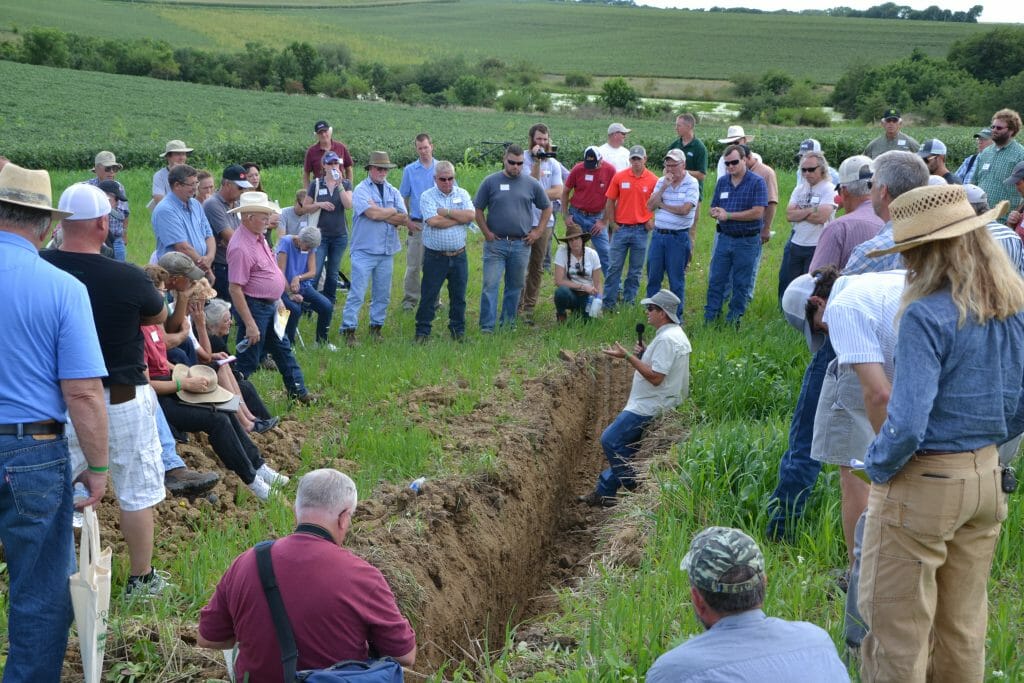
At a second soil pit Chris shared how they are using crop rotations with small grains and diverse cover crop mixes to remediate some poor soils leftover from a building project.
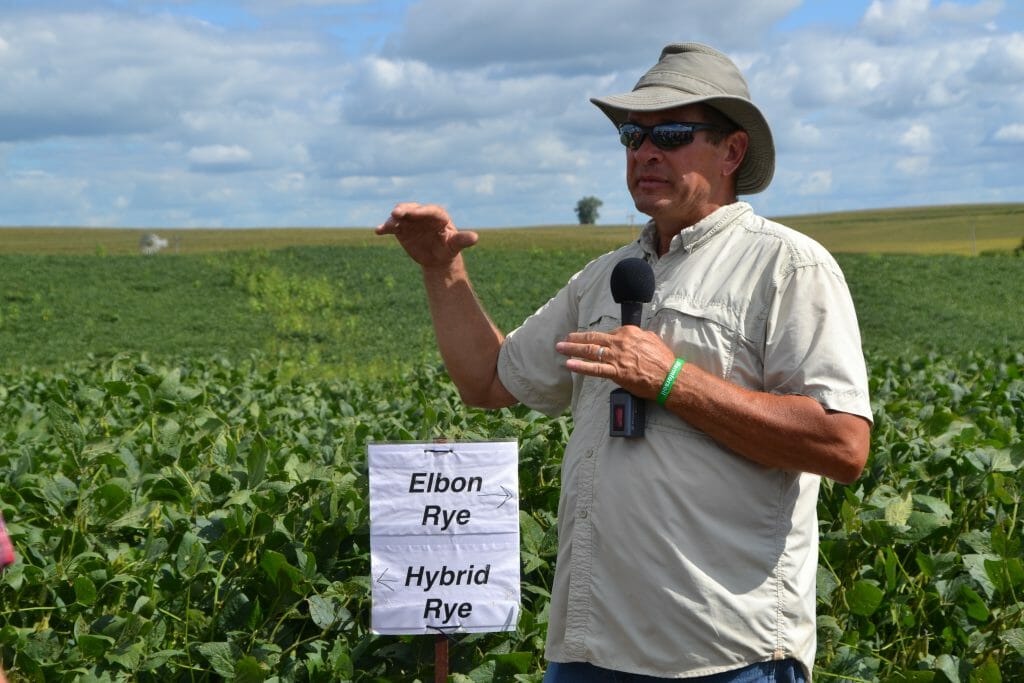
Chris showed some spots where he used ‘Elbon’ rye (an O.P. variety) and a hybrid rye variety as cover crops. The Elbon worked better as a cover crop because it grew taller and provided more residue. Notice weeds sticking up through the soybean canopy in the background where the cover crops failed to establish.
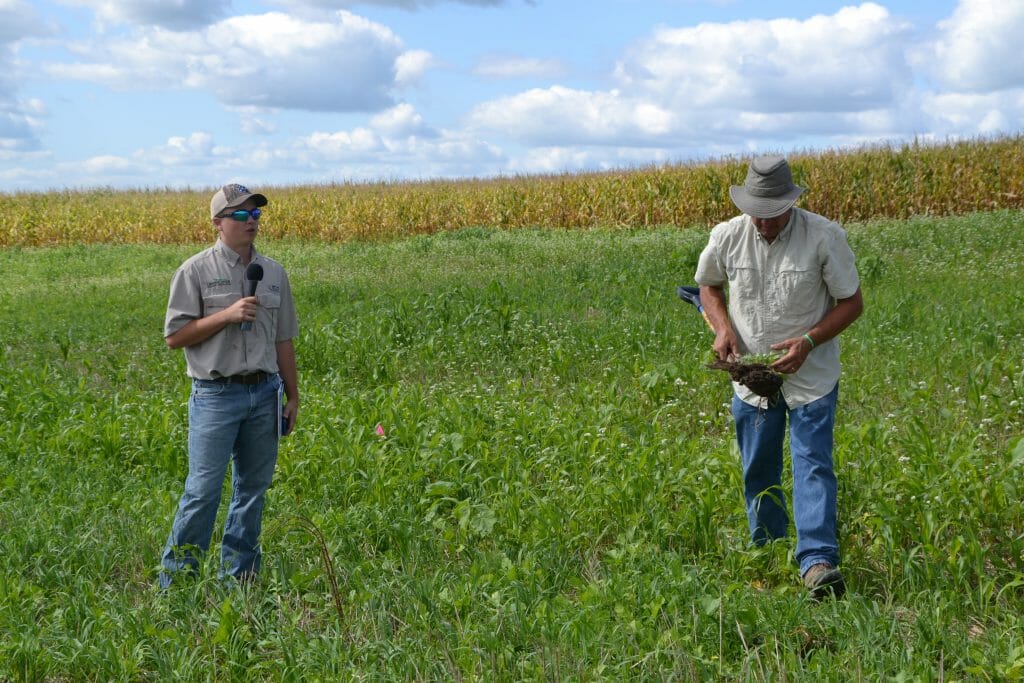
Colten Catterton (left) of Green Cover Seed shared how he helps farmers choose cover crop species to seed based on the goals they have while Chris takes a spadeful of soil to pass around the group.
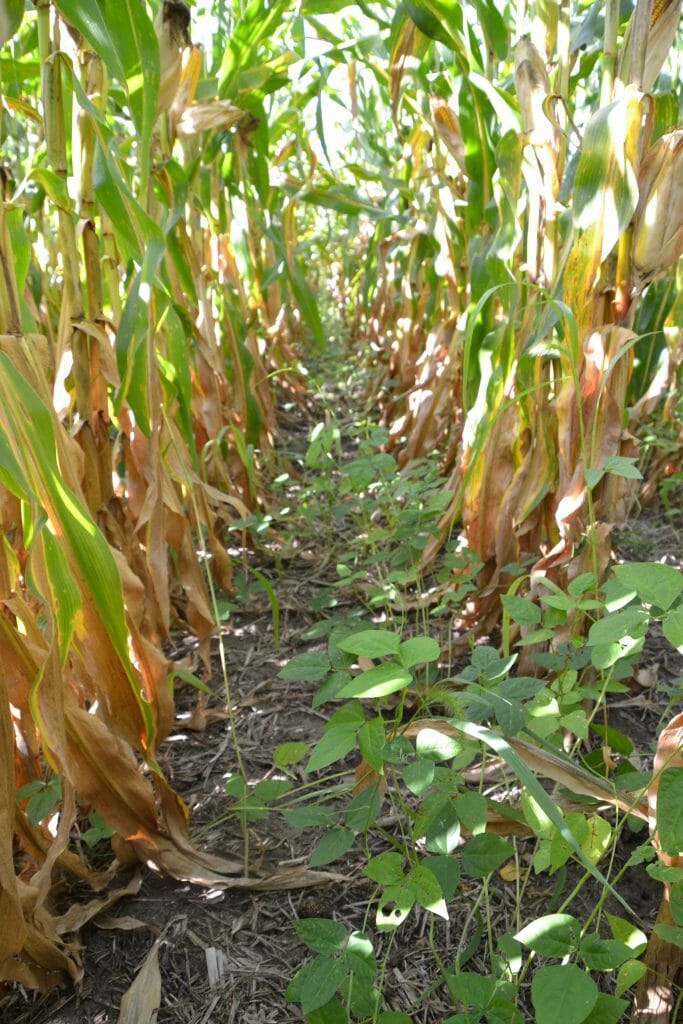
‘Iron and Clay’ cowpeas interseeded to knee-high corn back in June. Corn was planted at a population of 32,000 seeds/ac.
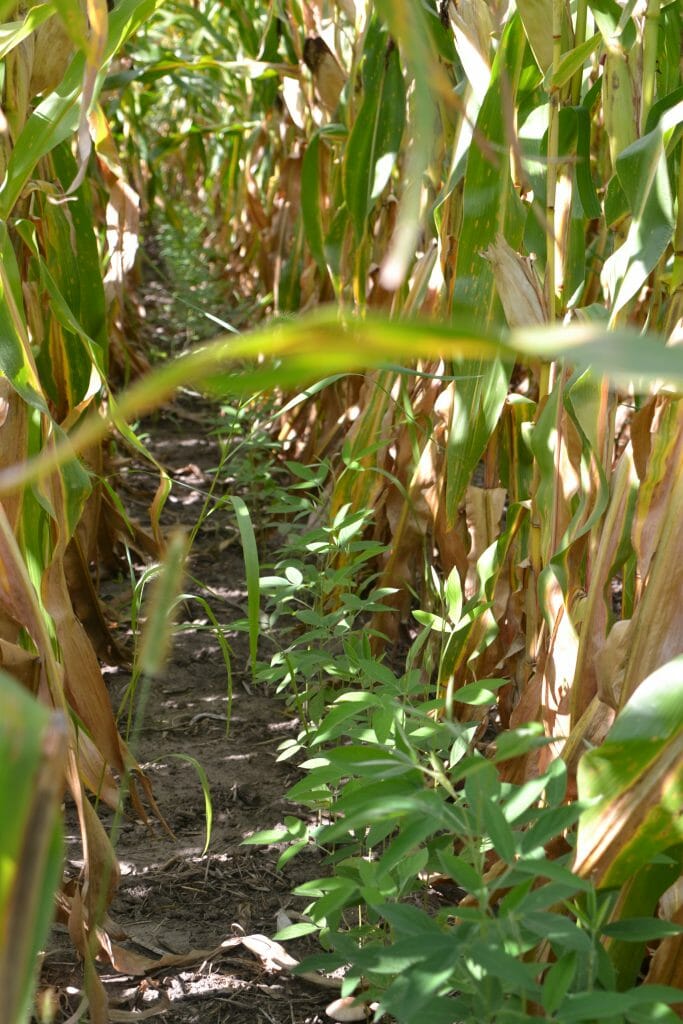
Pigeon peas interseeded into knee-high corn back in June.
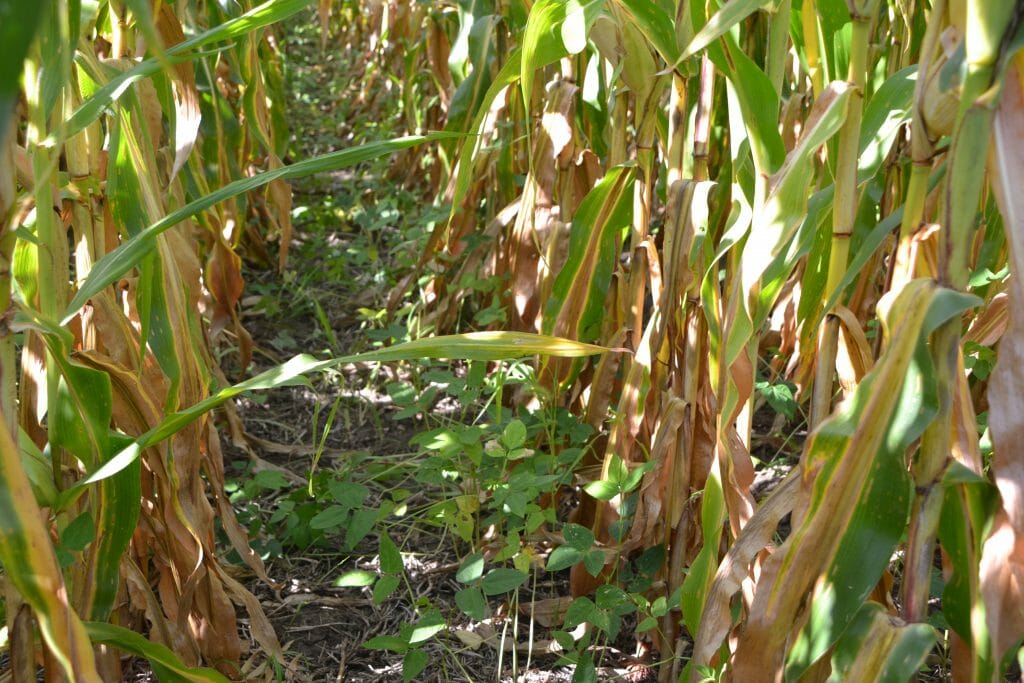
Corn with cowpeas.
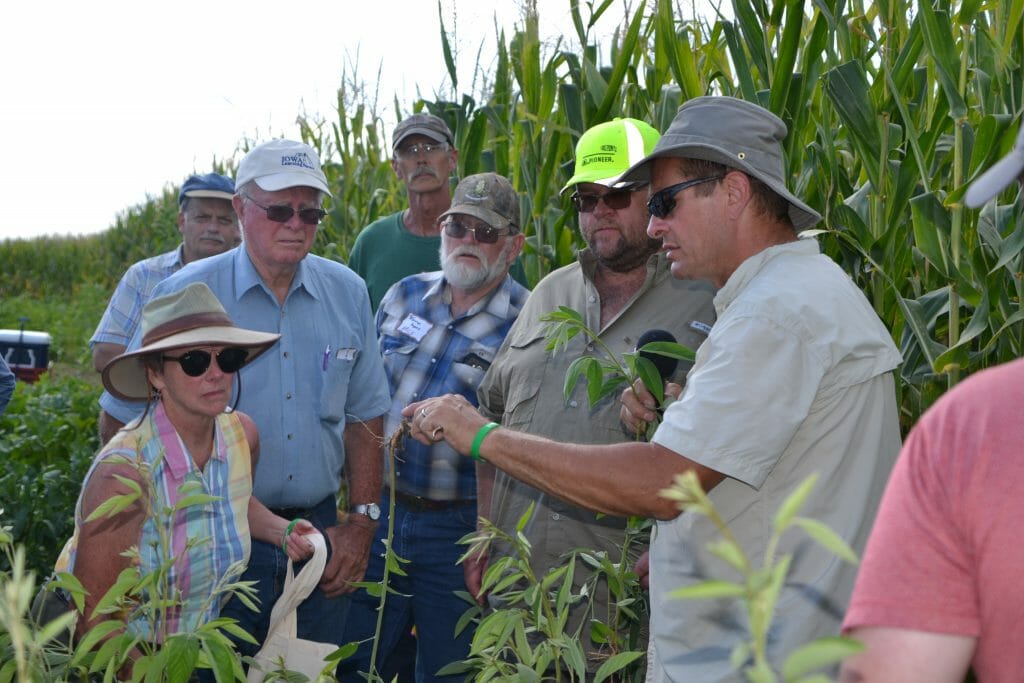
Chris and Jill inspect root nodules on the legumes interseeded to corn. Chris inoculates all legume seeds to ensure nodulation and atmospheric fixation of nitrogen.
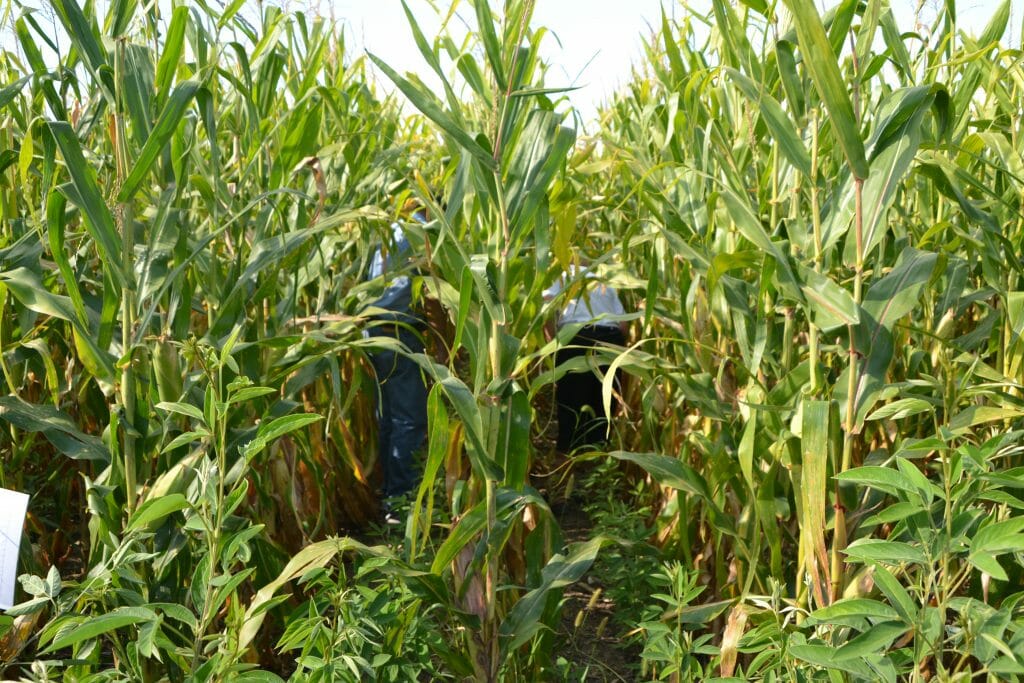
Attendees take a closer look a the corn interseeded with pigeon peas.
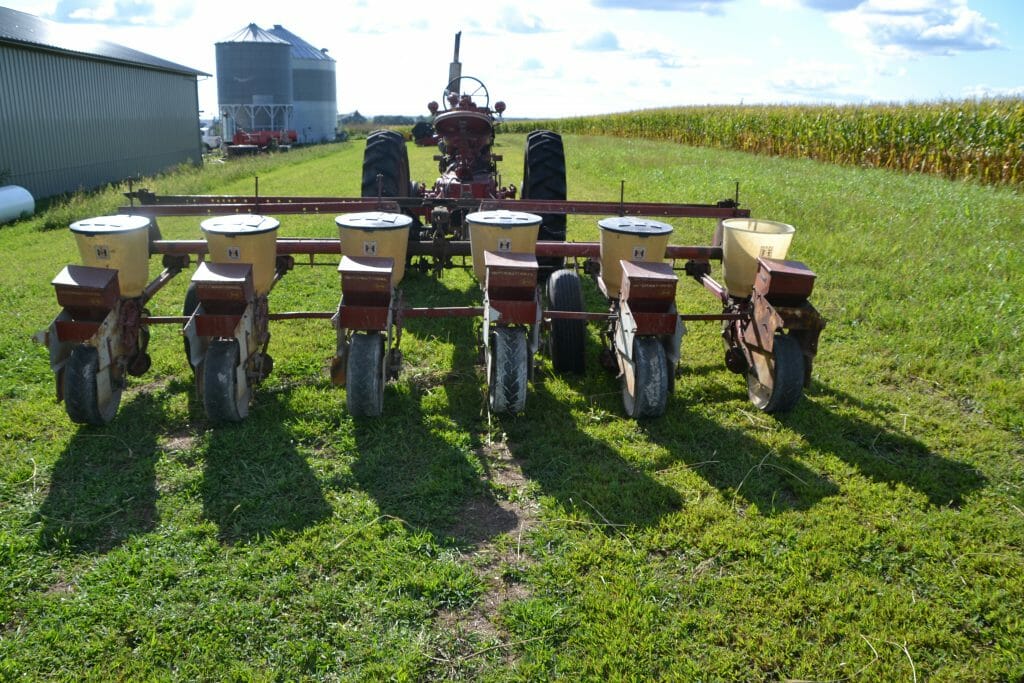
The old International planter Chris uses to interseed cover crops when corn is knee-high. Chris offset the planter units in order to be able to seed between the corn rows. “I think I’ve invested about $1,200 in that old thing,” he told the audience.
Chris, Janenne, and Chelsey Teachout and Thomas Burkhead.
Thank you to our partner organization for this field day, Green Cover Seed, as well as field day sponsors North Central SARE, Iowa Farmers Union and Page County SWCD for their support and help putting on this event.

